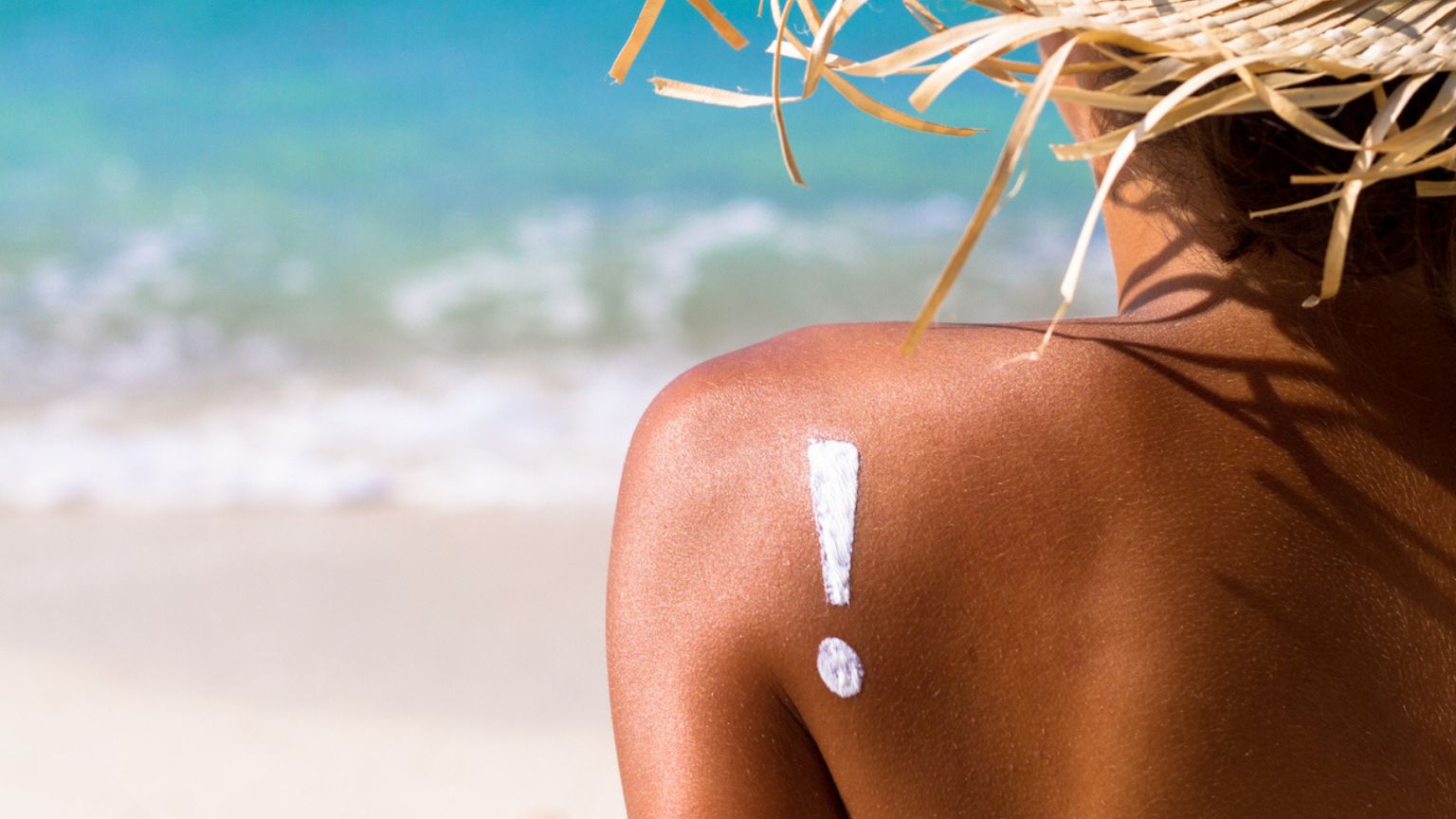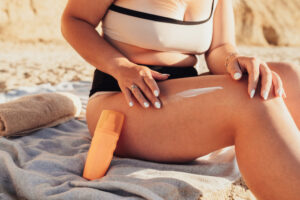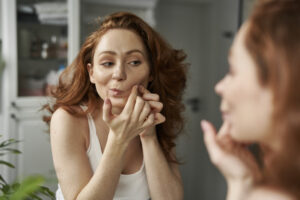Whether you’re off to Barbados or Brighton, here’s what you need to know to protect your skin with sunscreen and still get a glow about you this summer
Whether you’re off to Barbados or Brighton, it’s sunny and you’ve the whole skin protection thing to negotiate. That’s when SPFs, UVAs, UVBs can spell a big fat C.O.N.F.U.S.E.D
Here are 12 surprising facts you need to know about protecting your skin from the sun this summer…
Surprising fact #1 SPF50 isn’t that much higher than SPF30
It’s logical that SPF 50 should means almost twice the protection of SPF 30, right? It doesn’t. An SPF 6 filters out 75 per cent of the sun’s rays but then it takes a jump as SPF 15 filters out 93 per cent.
Above that the difference is small, with SPF 30 filtering out 97 per cent of the sun’s rays and SPF 50 filtering out 98 per cent.
What’s the point of going super-high? Well for those with very fair skin that burns easily, every percentage point counts so an SPF50 is still best.
Surprising fact #2 Ten minutes is enough to get your D
Sun is important for producing vitamin D, a super-nutrient believed to help prevent some cancers, heart disease and bone-thinning.
At the end of the long, sunless winter and at the beginning of spring, 50 per cent of Britons have low levels of vitamin D and about 15 per cent have a severe deficiency.
Ten minutes of exposure to the sun two to three times a week, without sunscreen and not between 11am and 3pm will be enough for most people and after that put on a hat and sunscreen.
READ MORE: 10 things you need to know about SPF – plus 5 sun protection products we love
Surprising fact #3 You need sunscreen even if you wear a hat
On holidays, sun’s rays rebound off shiny surfaces such as water, sand and snow. That means it can burn the parts of you that an umbrella or hat don’t cover up as it bounces off other surfaces, burning skin from the side and underneath.
Surprising fact #4 Redness is a burn
‘But I go red and then I tan’ is a common mantra most of us get wrong. Studies show that DNA damage is caused in the skin by sun exposure even before the skin has gone red.
Once you have gone red, deep DNA damage has been done and over time, this can lead to skin cancer and premature ageing. Them’s the facts.
Surprising fact #5 Sunscreen is a moisturizer
An SPF 30 can be used as a moisturiser during the summer months but the reverse doesn’t apply. Moisturisers with sun protection factors less than SPF 15 are not enough protection in summer and, if your moisturizer is SPF 6 and your foundation is an SPF 10, that doesn’t add up to an SPF16.
Also, in the summer replace your body moisturiser with SPF 15 or 30. The most common area of skin cancer in women is the legs because they rarely apply sunscreen to their lower halves.
READ MORE: Melasma, freckles & SPF – 6 ways to care for your skin in time for Summer
Surprising fact #6 Most of us use half the sunscreen we need
The average person needs two teaspoons full of sun cream to cover their head, arms and neck. For the entire body you need about two tablespoons. If you think you’re highly unlikely to use that much, go for the highest protection you can get.
Even then, reapply every two hours and more often if you have changed clothes, been swimming or sweating or if you have rubbed yourself with a towel.
Find out more at sunsmart.org.uk.
Surprising fact #7 You can still burn when there is no direct sun
Here’s how it works. There are two types of UV light. UVB rays are most present in direct sunlight (a product’s SPF refers to how well it protects from UVB) and these are the rays that cause burning and skin cancer.
UVA rays are the sun’s ageing rays and they get deeper into the skin and cause wrinkles. They’re present on both sunny and dull days and penetrate cloud as well as glass.
Look for the letters UVA in a circle next to the SPF number on the label. Many products also have a ‘Star Rating’ UVA rating system on the back.
The Boots Soltan Range has the highest level UVA protection, which is five stars.
Surprising fact #8 Foods can help skin sun protection – but only a bit
Antioxidant rich foods help keep you young and now they have another gold star. Berries, black grapes, peppers, tomatoes and even ketchup could help pump up your skin’s natural sun protection.
Foods with red and purple pigments can help mop up the free radicals caused in the skin when it’s exposed to sunlight. You still need your protection but this will help guard against the tiny bits of damage that can get through sunscreen.
READ MORE: 6 ways to hydrate on the move during a heatwave
Surprising fact #9 The sun’s stronger depending on where you are
Now for some geography. If you’re sunbathing in a country closer to the equator, the sun feels more ferocious because it is. Closer to the equator you get more UVB rays, that’s why you burn more quickly in tropical places.
But UVA rays are constant and that means the sun’s ageing rays are there wherever you are with natural light, even in the Lake District on grey day.
Surprising fact #10 Roasting for two weeks a year = skin cancer risk
There are two types of skin cancers. One is non-melanoma skin cancer, which comes from the cumulative effect of little bits of unprotected exposure throughout your life.
But melanoma skin cancer, the more dangerous form, is caused by intermittent strong exposure to sunlight, for example from intense burning for two weeks a year throughout your life.
If you did that as a child or teenager, your risk is even higher. Enjoy the sun, but use an SPF 30 when you’re on holiday in sunny climates and during the summer months in Britain.
READ MORE: The beauty diet – 5 ways to eat for acne
Surprising fact #11 Sunscreen can give you pimples
You’re not imagining it. To screen effectively suncreens have to bind to the skin but as a result, many block the pores. If you experience that, use a lighter or alcohol-based lotion instead of a cream as this won’t block the skin’s sebaceous (oil) ducts and make breakouts less likely.
Surprising fact #12 SPF30 can still get you a tan
A tan comes from a pigment known as melanin which gives your skin colour. It’s also the body’s UV filter and when the skin is exposed to light, melanin absorbs it and makes the skin burn, then go brown.
By using a high protection product all over, you can protect the skin before it burns. Because such sun protection still allows two or three per cent of the sun’s rays to get through, you’ll get a hint of colour while protecting your skin before a damaging reaction occurs.
HEALTHISTA’S ANSWER TO MENOPAUSE; MENOSTART: PRESS PLAY, NOT PAUSE.
The Healthista Menopause Pack is a fully comprehensive online video workshop, led by Dr Dawn Harper; affordable, accessible and covering all aspects of the menopause, for those who need it most.
With expert advice and information from seven credible menopause industry experts, we hope that this online resource will help women navigate common health and wellness changes and challenges they may experience before, after and during the menopause.
Like this article? Sign up to our newsletter to get more articles like this delivered straight to your inbox.

























































